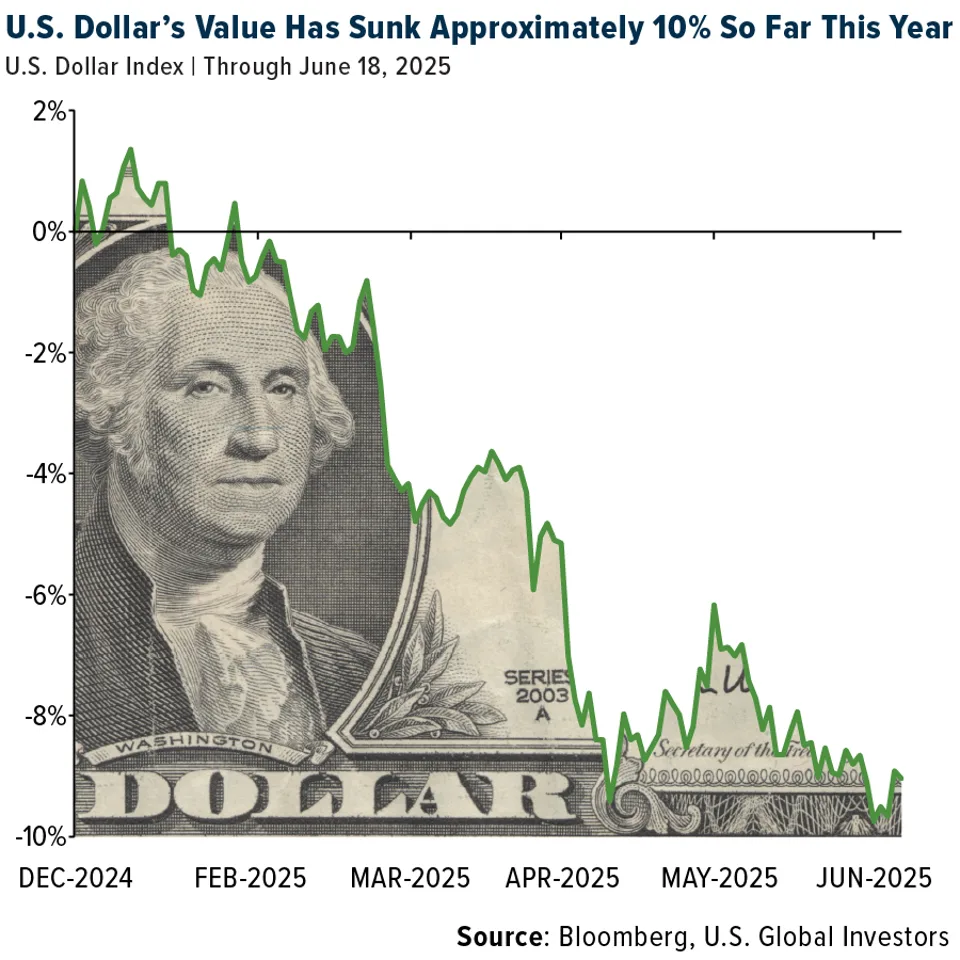The U.S. dollar's weakening status has propelled gold to a historic high of over $4,000 an ounce, driven by central bank buying and global uncertainty, signaling a potential shift in the global financial landscape.

October 7, 2025

Source:
MarketWatch
Gold's Unprecedented Climb
Gold surged past the $4,000 an ounce mark for the first time on October 7, 2025, crowning an exceptional year for the precious metal. This historic rally represents a more than 50% increase in price throughout 2025, its most robust performance since the late 1970s.
The momentum has been building all year, with gold first hitting $3,500 in April before its recent break into new territory.
Key Drivers of the Surge
Several powerful forces are fueling gold's ascent:
Weaker U.S. Dollar: As the dollar falls, gold becomes cheaper for international buyers, which in turn spurs demand. This inverse relationship has been a primary market driver in 2025.
Geopolitical Risk: Persistent global conflicts and trade uncertainty have heightened demand for safe-haven assets. According to the World Gold Council, such risks consistently bolster investor interest in gold.
Aggressive Central Bank Buying: Central banks worldwide are on pace to purchase a near-record 900 tonnes of gold this year, continuing a multi-year strategy to diversify their reserves away from the U.S. dollar.
Inflation and Rate Concerns: Sticky inflation and uncertainty over real interest rates have sustained gold's appeal as a reliable hedge against eroding currency value.
Keep up with the story. Subscribe to the PR+ free daily newsletter

Source:
Forbes
U.S. Dollar's Retreat from Dominance
The dollar’s simultaneous retreat has amplified gold's rally. The U.S. dollar’s share of global central bank reserves fell to approximately 57.8% at the close of 2024, and the weakening trend has continued throughout 2025.
A Shifting Dynamic
While gold and the dollar have occasionally risen together during periods of acute crisis, 2025 has seen a return to their classic inverse relationship. As the dollar has weakened, gold has soared. However, analysts cited by financial news outlets like Morningstar emphasize that the market has grown more complex. Systemic risks and central bank policy are now considered equally important drivers for gold, alongside the dollar's value.
Factors Behind the Decline
Fiscal and Monetary Policy: Mounting U.S. fiscal deficits and signals of monetary easing from the Federal Reserve have placed significant pressure on the dollar.
Global De-dollarization: The move by central banks to diversify their holdings is a clear, long-term trend that reduces global reliance on the dollar and challenges its hegemonic status.
Read More

Source:
Morningstar
Share this news:




















